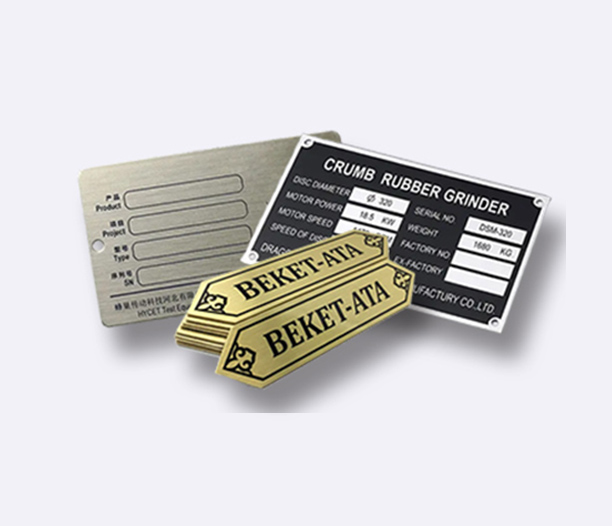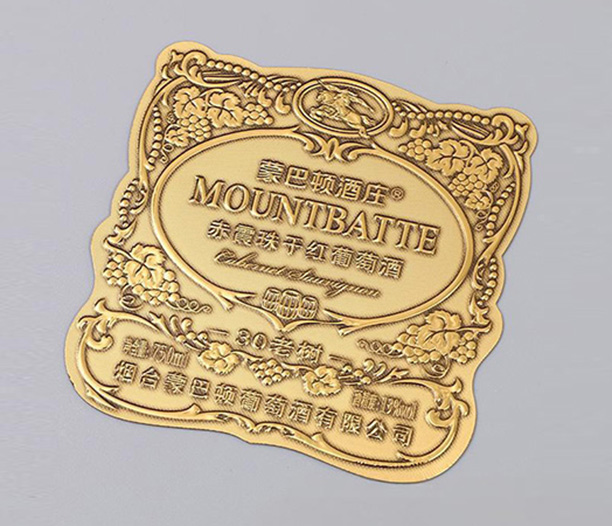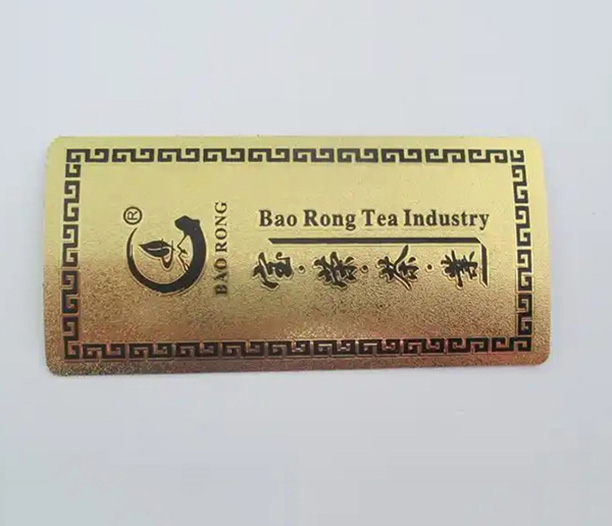In the world of asset identification, branding, and information display, the need for a permanent, durable, and professional solution is paramount. Among the myriad of materials available, one stands out for its exceptional combination of strength, versatility, and cost-effectiveness: aluminum tags for engraving. These unassuming plates are the workhorses of industry, found everywhere from factory floors and data centers to outdoor machinery and personalized gifts. But what makes them so special?
This comprehensive guide will delve deep into the world of aluminum tags for engraving, exploring their key characteristics, the different types available, the engraving processes used, their vast array of applications, and crucial factors to consider when sourcing them. Whether you're an engineer, a business owner, or a DIY enthusiast, understanding the power of these tags will help you make an informed decision for your next project.
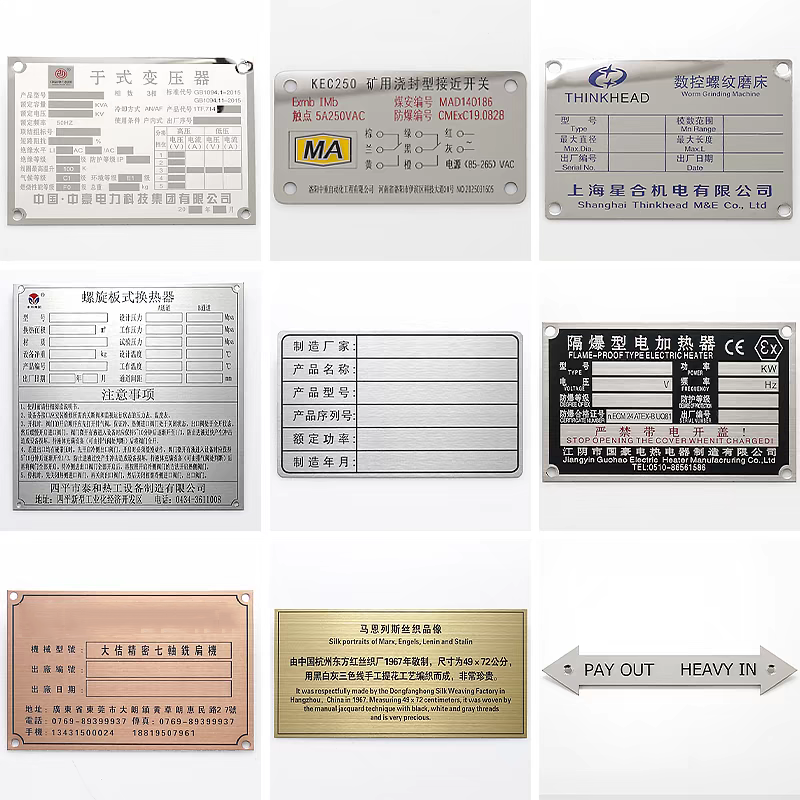
Why Choose Aluminum? The Unmatched Advantages of Aluminum Tags for Engraving
Aluminum tags for engraving are not just popular by accident; they are the result of a material perfectly suited to the task. The inherent properties of aluminum make it an ideal candidate for creating long-lasting identification.
Exceptional Durability and Weather Resistance: Aluminum naturally forms a thin, protective layer of oxide when exposed to air. This layer makes it highly resistant to corrosion, rust, and tarnishing. Unlike steel, it won't rust, and unlike brass, it doesn't require a clear coat to prevent oxidation. This makes aluminum tags perfect for harsh environments, including outdoor use, chemical plants, and marine applications.
Lightweight Yet Strong: Despite being remarkably lightweight, aluminum offers excellent structural strength. This means tags can be made thin and easy to handle or attach without sacrificing durability or becoming prone to bending or breaking under normal conditions.
Superior Engraving Quality: The softness of aluminum compared to steel makes it easier and faster to engrave. It produces a clean, high-contrast mark with minimal burrs. The engraved grooves are smooth and precise, ensuring excellent readability of text, logos, barcodes, and QR codes.
Cost-Effectiveness: Aluminum is an abundant material, making it one of the most economical choices for metal tags. This affordability allows for large-scale tagging projects without compromising on quality or performance.
Aesthetic Versatility: Aluminum tags for engraving can be supplied in a natural silver finish, or anodized in various colors like black, red, blue, and gold. Anodizing not only adds color but also further enhances the surface hardness and wear resistance. Engraving through the anodized layer reveals the bright silver aluminum underneath, creating a striking and permanent contrast.
Understanding the Types: From Anodized to Brushed Aluminum Tags
Not all aluminum tags are created equal. The manufacturing process and finishing treatments result in different types of tags, each with its own set of benefits.
Anodized Aluminum Tags: This is the most common and highly recommended type for engraving. The anodizing process electrochemically thickens the natural oxide layer, creating an extremely hard, durable, and corrosion-resistant surface. The colored surface is perfect for engraving, as the tool cuts through the color to reveal the bright metal beneath, ensuring maximum legibility. Black anodized aluminum tags for engraving are particularly popular for their classic, professional appearance and high contrast.
Non-Anodized (Mill Finish) Aluminum Tags: These tags are made from raw, untreated aluminum. They have a natural, silvery-gray appearance. While they are still durable and engrave well, they lack the enhanced surface hardness and color options of anodized tags. They are a good budget option for indoor applications where extreme durability is not a primary concern.
Brushed Aluminum Tags: These tags undergo a finishing process that creates a textured surface with a consistent linear grain pattern. This finish is primarily chosen for its aesthetic appeal, offering a modern, sleek look that hides fingerprints and minor scratches better than a polished finish. They can be anodized after brushing to combine aesthetic appeal with durability.
Embossed Aluminum Tags: While not exclusively an engraving tag, some aluminum tags can be both embossed (raised characters) and engraved. Embossing provides tactile information that can be read by touch or in low-light conditions, while engraving can add finer details or serial numbers.
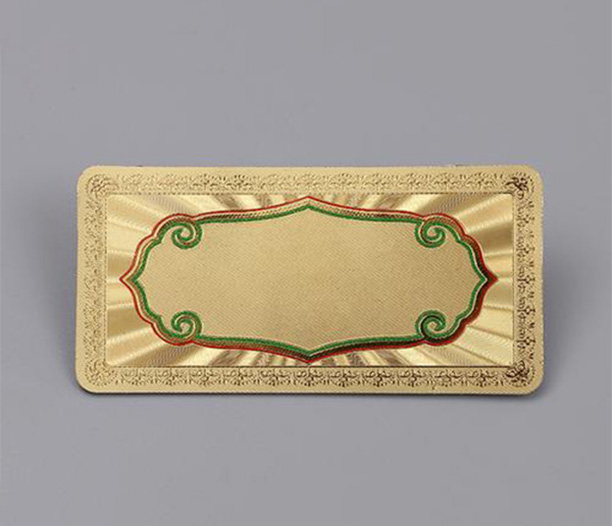
The Art of Marking: Engraving Processes for Aluminum Tags
The method used to engrave aluminum tags significantly impacts the speed, cost, and final appearance of the tag. Modern technology offers several highly effective options.
Diamond Drag Engraving: This process uses a hardened diamond-tipped stylus to scratch or "drag" a path through the surface of the metal. It's a cold process, meaning no heat is generated. It is exceptionally precise, quiet, and perfect for creating fine details, serial numbers, and complex logos on anodized aluminum tags. It is the go-to method for most industrial and commercial engraving needs.
Laser Engraving: Laser machines use a high-powered beam to vaporize the material's surface, creating a permanent mark. Laser engraving on aluminum is incredibly fast and offers unparalleled precision and automation capabilities. For bare aluminum, a fiber laser is typically used to create a dark, high-contrast mark. For anodized aluminum, a CO2 laser can efficiently ablate the colored layer, revealing the silver subsurface, similar to diamond drag.
Rotary Engraving: This traditional method uses a spinning carbide cutter to physically remove material from the tag's surface. It cuts deeper than diamond drag engraving, which can be beneficial for tags that need to withstand abrasion or be filled with paint. It is a very robust method but can be slower and noisier than diamond drag.
Dot Peen Marking: This method uses a hard, carbide pin to strike the surface of the metal, creating a series of dots that form characters and patterns. It's a pneumatic or electromagnetic process that creates a deep, permanent indentation. While common on steel, it is also effective on softer aluminum, especially for applications where the tag might be subject to heavy wear or painting over.
Endless Applications: Where are Aluminum Engraving Tags Used?
The versatility of aluminum tags for engraving means they serve a critical role across dozens of industries and applications.
Industrial and Manufacturing: This is their primary domain. They are used as nameplates on machinery, serial number plates, safety and instruction labels, calibration tags, and asset tracking tags. Their durability ensures information remains intact in demanding environments.
Electrical and Data Infrastructure: Panel schedules, breaker labels, wire and cable tags, and server rack labels are commonly made from engraved anodized aluminum for permanent identification in data centers and electrical cabinets.
Aerospace, Military, and Defense: The need for absolute reliability and durability under extreme conditions makes these tags essential for part identification, specifications, and compliance labeling on aircraft, vehicles, and equipment. They often meet specific military standards (e.g., MIL-STD-130).
Outdoor and Asset Identification: For permanent outdoor asset tracking, such as on pipelines, utility poles, agricultural equipment, and marine hardware, these tags withstand sun, rain, snow, and salt spray far better than plastic or vinyl labels.
Professional, Office, and Custom Uses: From corporate branding on doors and desks to personalized dog tags, keychains, awards, and trophies, the professional look of a engraved aluminum tag adds a touch of quality and permanence.
Sourcing the Perfect Tag: Key Considerations Before You Order
To ensure you get the right aluminum tags for engraving for your project, keep these factors in mind:
Environment: Will the tag be indoors, outdoors, exposed to chemicals, or subject to abrasion? For harsh conditions, anodized aluminum is non-negotiable.
Attachment Method: How will the tag be mounted? Common options include adhesive backing (e.g., 3M VHB tape for a clean look), holes for rivets, screws, or bolts, and wire loops for hanging.
Size and Thickness: Determine the necessary size to hold all required information legibly. Thickness (or gauge) affects rigidity; a thicker tag (.040" / 1mm) is more robust for large sizes or harsh environments, while a thinner tag (.020" / 0.5mm) is suitable for smaller, adhesive-backed labels.
Quantity and Lead Time: Engraving is ideal for both short and long runs, but unit prices decrease with quantity. Consider your project timeline, as custom tags may require a few days of production and shipping time.
Data and Layout: Provide clean, vector-based artwork (e.g., .AI, .EPS, .SVG) for logos to ensure crisp engraving. For text and serial numbers, a simple spreadsheet often suffices for the supplier to import into their engraving software.
Aluminum tags for engraving represent a perfect synergy of material science and practical application. Their inherent durability, resistance to the elements, and superb engraving qualities make them an indispensable tool for permanent identification across a vast spectrum of uses. From ensuring safety on a factory floor to adding a professional touch to a corporate gift, these tags deliver unmatched performance and value. By understanding the different types, processes, and applications outlined in this guide, you are now equipped to select the perfect aluminum tags for engraving to meet your specific needs and create marks that will truly stand the test of time.



